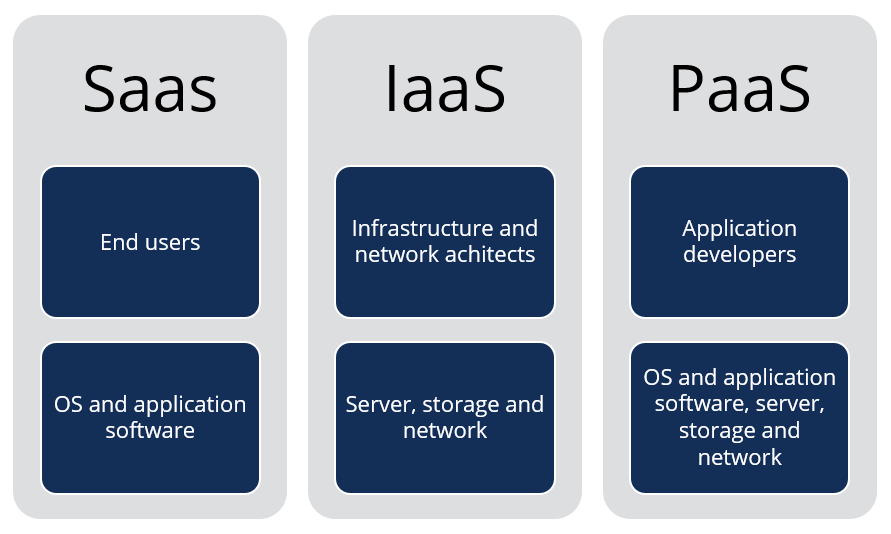Simplify Your Infrastructure With Cloud Services
As companies navigate the ever-evolving landscape of technology and data administration, the role of cloud solutions in simplifying facilities has become significantly popular. The appeal of streamlined processes, improved efficiency, and boosted source allowance through cloud remedies is obvious. Nonetheless, the trip towards a much more nimble and affordable IT framework entails even more than simply migrating to the cloud. It calls for a critical method and a deep understanding of the subtleties of cloud adoption. How can services effectively navigate this transition and absolutely unlock the possibility of cloud services for simplifying their framework?
Advantages of Cloud Provider
Cloud solutions use a streamlined approach to managing IT framework, offering businesses with flexibility, scalability, and cost-efficiency. Among the essential advantages of cloud solutions is the scalability they offer. Companies can easily scale their sources up or down based upon demand, guaranteeing they just pay for what they utilize. This versatility is specifically useful for organizations with changing requirements or those experiencing development.
Additionally, cloud services remove the requirement for companies to invest in expensive hardware and software. This cost-efficiency is a substantial benefit, particularly for tiny to medium-sized enterprises wanting to lessen upfront expenses. By utilizing cloud services, companies can access high-grade IT sources without the significant price connected with conventional infrastructure setups.
Furthermore, cloud solutions supply organizations with the versatility to access their data and applications from anywhere with a web link. This level of accessibility enhances cooperation amongst teams, allows remote job, and enhances general performance. The flexibility offered by cloud services empowers services to adjust swiftly to transforming market problems and customer demands.
Cost Financial Savings and Scalability
Along with the operational benefits highlighted earlier, the assimilation of cloud services right into a company's infrastructure brings forth considerable expense savings and improved scalability. Cloud solutions supply a pay-as-you-go version, permitting organizations to scale resources up or down based on present needs, thereby staying clear of the prices connected with preserving excess capability. This adaptability enables business to adjust promptly to rising and fall needs without sustaining unnecessary expenses.
Moreover, cloud services eliminate the requirement for in advance financial investments in software and hardware, decreasing capital investment. Business expenses are additionally lessened as business no more need to take care of and preserve physical servers, resulting in lower power intake and IT staffing prices. Furthermore, cloud services provide automated updates and upkeep, making sure that the facilities remains secure and current without needing hands-on interventions.
Enhanced Protection Procedures
Implementing strict safety measures is extremely important when incorporating cloud solutions into a firm's facilities to ensure and secure sensitive information compliance with sector policies. Cloud company provide enhanced protection features such as data file encryption, firewall defense, and multi-factor authentication to alleviate cybersecurity threats. Security helps shield data both at rest and en route, making sure that only licensed individuals can access delicate info. Firewalls serve as a barrier between external risks and internal networks, tracking and regulating incoming and outward bound network web traffic. Multi-factor authentication adds an additional layer of security by needing individuals to supply numerous kinds of verification before accessing the cloud solutions.
Moreover, normal security audits and conformity evaluations help determine click reference susceptabilities and guarantee adherence to market standards. Firms can likewise take advantage of features like computerized safety updates and real-time threat surveillance supplied by cloud solution companies. By focusing on safety actions and remaining proactive in addressing prospective risks, businesses can with confidence take advantage of cloud solutions while safeguarding their important data from unapproved access or violations.
Transitioning to Cloud Facilities
To successfully incorporate cloud solutions into a company's infrastructure, a structured strategy that attends to the change in the direction of cloud-based services is necessary. Transitioning to cloud facilities involves cautious preparation and execution to make sure a smooth migration procedure. The initial step is to evaluate the current facilities and figure out which systems and applications are suitable for migration to the cloud. This evaluation needs to think about variables such as information sensitivity, compliance requirements, and efficiency demands.
Once the assessment is complete, a movement strategy should be developed. This strategy must lay out the timeline, sources, and duties for relocating each part to the cloud. It is important to interact this plan clearly to all stakeholders to ensure placement and lessen disruptions during the transition.
During the migration tracking, procedure and screening are essential to he said determine and deal with any concerns quickly. Normal checkpoints ought to be developed to track development and make needed modifications. Furthermore, training for staff members on utilizing cloud solutions need to be offered to guarantee a successful shift and optimize the benefits of the new facilities.
Best Practices for Cloud Adoption
Successful adoption of cloud solutions hinges on the calculated positioning of service objectives with technical capacities and business readiness. To make sure a smooth transition to the cloud, companies must start by performing an extensive analysis of their current facilities and identifying which workloads are best fit for cloud movement. It is vital to involve crucial stakeholders from various departments in the decision-making process to obtain buy-in and address any type of problems at an early stage.
One more ideal practice for cloud adoption is to focus on security and compliance. Organizations has to carefully assess the safety and security actions provided by cloud service carriers and ensure that their information is secured according to sector standards and regulative needs. Carrying out robust data encryption, access controls, and routine security audits can assist mitigate threats related to cloud fostering.

Verdict

As organizations navigate the ever-evolving landscape of technology and information monitoring, the role of click here for info cloud services in streamlining infrastructure has actually come to be progressively famous - linkdaddy cloud services. Exactly how can businesses effectively navigate this shift and genuinely unlock the capacity of cloud services for simplifying their facilities?
Cloud solutions use a structured strategy to handling IT infrastructure, supplying organizations with cost-efficiency, flexibility, and scalability. By making use of cloud services, organizations can access premium IT resources without the hefty price tag connected with traditional infrastructure setups.
To ensure a smooth transition to the cloud, companies need to begin by performing a comprehensive assessment of their present framework and recognizing which workloads are best fit for cloud migration.